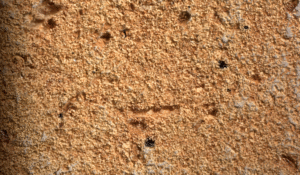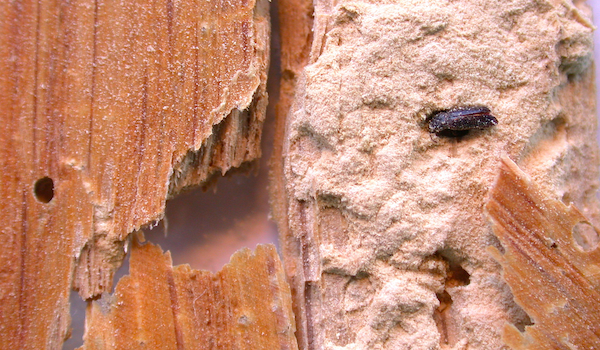(Photo: House Fungus Laboratory)
Always use registered products
against wood-boring insects
An old piece of advice with no evidence
According to an old folk remedy, kerosene or diesel oil can be used to exterminate beetles in woodwork. This is a folk remedy without any documentation, and the products will only work if so much liquid is introduced into the wood that the larvae actually drown.
Both products are flammable and contain easily vaporisable and harmful substances that are not appropriate to bring into the home. For example, using diesel oil in a roof structure to control beetle infestation would likely result in a very unpleasant odour of diesel in the home.
Use registered products against wood-boring insects
The correct and safest way to prevent and control wood-boring insects is to always use a product and method that is registered and approved by the Danish EPA.
It can be difficult to find out what pests you have in your woodwork. It is important to know what type of wood-destroying insects you are dealing with before starting treatment. PROTOX always recommends seeking advice from a pest control company.
Registered PROTOX products against wood-boring insects
At Protox, we have various registered products for the prevention and control of wood-destroying insects, including INSEKT, INSEKT CONCENTRATE and KOMBI PROTECT. All products prevent insects from infesting new areas of the woodwork, but there is a difference between INSEKT and KOMBI PROTECT.
INSEKT is applied by brush, spraying or dipping, while KOMBI PROTECT can only be applied by roller or brush. Both products are water-based and have a MAL code of 00-1.
INSEKT has the best ability to stop infestation where insects are active. In turn, KOMBI PROTECT prevents attacks from both wood-boring insects, wood-degrading fungi and discolouring mould (blue stain).
OBS! INSEKT and INSEKT KONC. should only be used by professionals.
Finishing the woodwork
After a thorough and correct treatment of the woodwork with PROTOX products, activity in the form of sprinkles may occur for a longer period of time, which is completely natural.

When wood is treated with an insecticide, the insecticide does not fully penetrate the wood but forms a "barrier" in the outermost millimetres of the wood. The beetle larvae do not realise this as long as they remain deep in the wood below the "INSECT zone". Here it can stay for several years. The moment the beetle becomes old enough and wants to mate, it gnaws its way up to below the surface of the tree and pupates. At this point at the latest, it comes into contact with the insecticide and dies.
You will find that insect infestations slowly die out over a period of a few years. If you want a faster effect, you need to carry out a deep impregnation in the form of valve impregnation with Protox Insect. Valve impregnation is also the right approach for painted surfaces or very large and inaccessible timber dimensions.
Also be aware that even if the beetle infestation has been completely knocked down, timber can sprinkle when exposed to strong winds. It is the timber "twisting" that causes old drill cuttings to sprinkle out.
Read more about products under PROTOX INSECT DAMAGE RESTORATION
